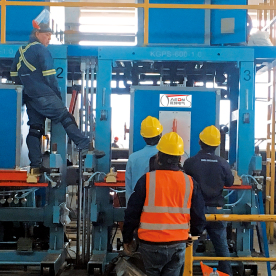[Variable Impedor Device]Understanding Variable Impedor Devices: Their Role in Modern Electronics and Benefits for System Optimization
News 2024-8-10

Understanding Variable Impedor Devices: Their Role in Modern Electronics and Benefits for System Optimization

Understanding Variable Impedor Devices: Their Role in Modern Electronics and Benefits for System Optimization
What is a Variable Impedor Device?
A Variable Impedor Device is an electronic component designed to modulate impedance levels in a circuit. The impedance of a device refers to how much it resists the flow of electric current, which can vary with frequency, making it a critical factor in signal integrity and energy transfer. Variable Impedor Devices allow engineers to adjust this impedance dynamically based on operational requirements, leading to optimized performance in communication systems, audio applications, and many other domains.
Functionality of Variable Impedor Devices
The fundamental operation of a VID revolves around its ability to change its resistance, reactance, or both, based on external control signals. These devices can take various forms, such as potentiometers, digital controllers, or more sophisticated circuits employing transistors or operational amplifiers. The manipulation of impedance is essential in various applications, including signal matching, which helps maximize power transfer and minimize reflections in high-frequency circuits.
In practical implementations, VIDs may be employed in applications such as tunable filters, where impedance adapts to serve varying frequencies, or in audio systems, where they ensure consistent sound quality by compensating for variations in speaker impedance. The flexibility offered by these devices is paramount, especially in dynamic environments that demand quick adjustments.
Applications of Variable Impedor Devices
1. **Telecommunications**: One of the primary applications of VIDs is in telecommunications, where managing signal integrity over long distances is crucial. Variable Impedor Devices can optimize the impedance seen by the transmitting and receiving ends of a communication channel, significantly enhancing signal quality and reducing losses due to reflections.
2. **Audio Equipment**: In high-fidelity audio systems, VIDs allow for real-time adjustments in the impedance matching between amplifiers and speakers. This capability ensures that audio signals remain clear and rich, regardless of changes in load conditions, enhancing overall listening experience.
3. **Radio Frequency (RF) Systems**: RF technology relies heavily on matching impedances for efficient transmission of signals. VIDs can adjust the impedance of antennas, amplifiers, and filters in RF circuits, optimizing performance against frequency variations and environmental changes.
4. **Medical Devices**: In medical electronics, VIDs can play a pivotal role in devices such as electrocardiograms (ECGs), ensuring accurate readings by maintaining optimal impedance levels throughout the measurement process.

Understanding Variable Impedor Devices: Their Role in Modern Electronics and Benefits for System Optimization
Benefits of Using Variable Impedor Devices
**Flexibility and Adaptability**: The primary benefit of employing Variable Impedor Devices is the flexibility they offer. Their ability to change impedance on-the-fly allows systems to adapt to different operational conditions without requiring significant hardware changes. This dynamism can lead to improved overall performance in various applications.
**Enhanced Performance**: By ensuring optimal impedance matching, VIDs can minimize signal loss and distortion. This enhancement is critical for applications such as telecommunications and audio systems, where maintaining signal integrity is paramount.
**Reduced Design Complexity**: Incorporating VIDs into electronic designs may simplify circuit layout, as these devices can replace multiple fixed impedance components, thus reducing the number of necessary parts and overall design complexity.
**Cost Efficiency**: Over time, utilizing Variable Impedor Devices can lead to cost savings. Their adaptability can eliminate the need for frequent hardware modifications or replacements, offering a more sustainable approach to system design and maintenance.
Conclusion
The Variable Impedor Device is a potent component in modern electronics, offering unmatched versatility and performance. As we move towards increasingly complex and demanding electronic environments, the role of VIDs will only become more critical. Their ability to dynamically adjust impedance ensures that electronic systems continue to evolve, meeting the ever-growing needs of consumers and industries alike. Whether in telecommunications, audio systems, or medical devices, VIDs are set to remain at the forefront of electronic innovation.
